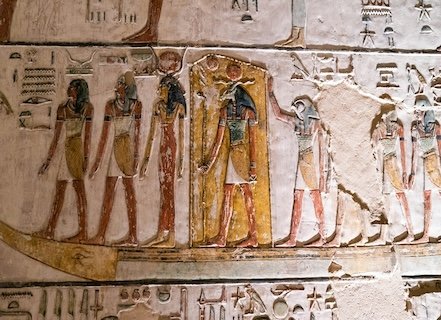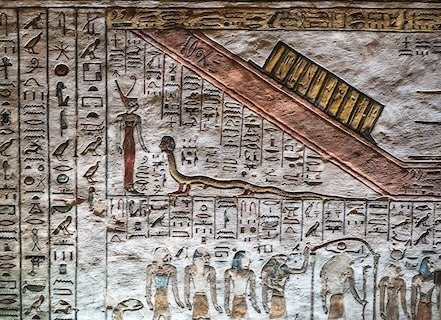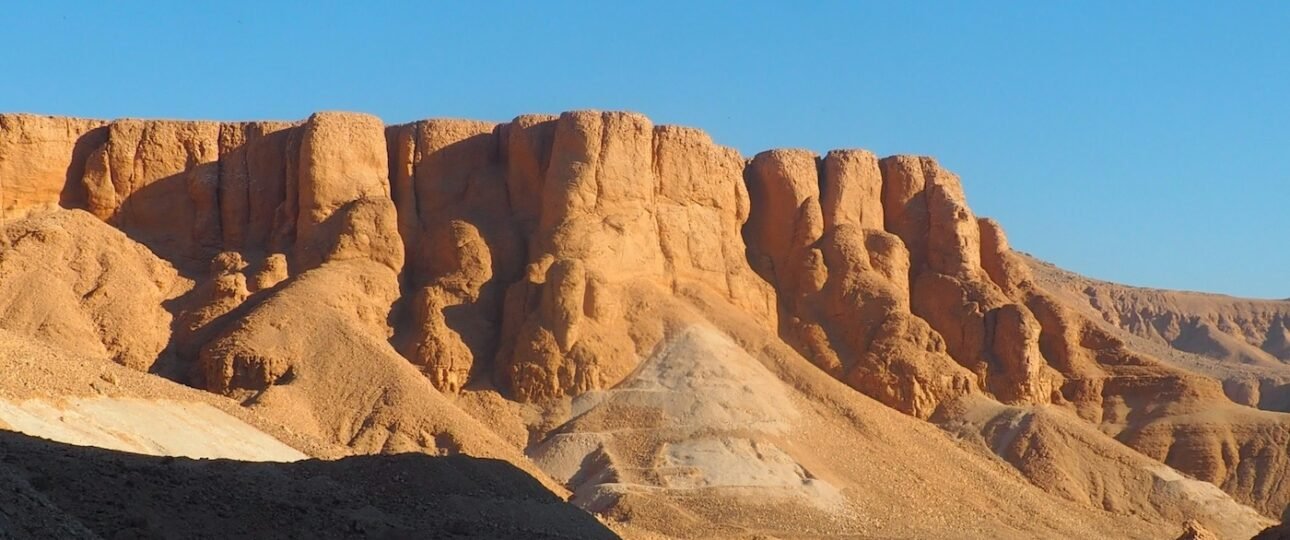Beneath the Cliffs of Time: Exploring Valley of the Kings
At first glance, the rugged desert cliffs west of Luxor seem quiet, their beige tones melting into the sky. But beneath this sun-soaked silence lies one of the most remarkable burial grounds on earth — the Valley of the Kings. This sacred stretch of earth, carved into by hand over centuries, was once the gateway to eternity for Egypt’s greatest rulers. Today, it welcomes travelers who seek something more than a postcard view — those who crave the stories behind the stones.
In this article, we explore why the Valley of the Kings continues to fascinate visitors and scholars alike. You’ll learn about its symbolic geography, walk the painted corridors of pharaohs, discover its hidden complexities, and see how archaeology is still rewriting its story. Whether you’re planning your first trip or already imagining the golden mask of Tutankhamun, this guide will enrich your journey — both physically and imaginatively.
A City of the Dead — With Stories Still Alive
More than 3,000 years ago, Egypt’s New Kingdom rulers chose this desert valley as their final resting place. It wasn’t just about burial — it was about resurrection. Located on the Nile’s west bank, where the sun sets and the afterlife begins in ancient belief, the Valley of the Kings was carefully chosen for its symbolism and seclusion.
Over the course of nearly five centuries, from the 16th to the 11th century BCE, pharaohs and nobles commissioned tombs here to guide them through the underworld. The walls were filled with spells and celestial maps, gods and serpents, stars and symbols — everything needed for a safe passage to eternal life.
Today, those same corridors draw visitors from around the world, offering a glimpse into ancient minds and immortal dreams.


Why the Valley Was Hidden in Plain Sight
The valley’s barren landscape was no accident. Pharaohs deliberately moved away from pyramid construction, opting instead for hidden tombs carved into the limestone cliffs. The goal? Protection from looters. The valley’s natural guardian — the pyramid-shaped peak of al-Qurn — added spiritual power and, perhaps, a visual reminder of Old Kingdom traditions.
Despite the secrecy, most tombs were eventually robbed. Yet one spectacular exception survived: the nearly intact tomb of Tutankhamun, discovered in 1922. The riches found inside stunned the world — and revealed what other tombs might have once held.
 A Walk Through Time
A Walk Through Time
Walking through the valley today is like entering a silent theatre of ancient drama. Some tombs are simple shafts. Others — like the vast tomb built for the sons of Ramesses II — stretch into underground labyrinths with over 120 chambers. Each one tells a different story.
You descend ramps or spiral down corridors. The air cools. The walls come alive with radiant colors — blues, golds, and reds preserved for millennia. Scenes unfold from the Book of the Dead, the Amduat, and the Book of Gates — guides for the pharaoh’s soul. There are gods with animal heads, serpents devouring the unworthy, and solar boats sailing across the sky.
It’s not just the art — it’s the silence, the scale, the realization that these walls were painted by hand in candlelight, never meant to be seen again.
The Valley Lives On
Declared a UNESCO World Heritage Site in 1979, the Valley of the Kings is more than a historical site — it’s a living archaeological laboratory. Excavations are ongoing. New tombs are being identified. Fragments of pottery, walls, and bones still speak. You’re not just visiting a monument — you’re stepping into an evolving mystery.
As efforts to preserve the tombs intensify, only a limited number are open to the public at any one time. Some, like KV62 (Tutankhamun), require a separate ticket. Others rotate access to protect fragile paintings from humidity and foot traffic.
To make the most of your visit, go with an expert guide who knows the stories beyond the hieroglyphs — someone who can bring the silence to life.
20 Fascinating Facts About the Valley of the Kings
The Valley of the Kings is full of unexpected details, symbolic meanings, and secrets still unfolding. Whether you’re preparing to visit or simply want to feel the thrill of ancient Egypt from afar, these 20 compelling facts will bring the Valley to life — and highlight just how much more there is than meets the eye.
- It’s not just for kings. Despite the name, at least 8 tombs in the valley belong to royal wives, sons, or high-ranking officials — including the powerful Chancellor Bay.
- The Valley holds over 60 tombs — but not all are finished. Some tombs abruptly end mid-carving, likely because the pharaoh died before construction could be completed.
- Tutankhamun’s tomb (KV62) is unusually small. His early death meant he had to be buried in a repurposed, hastily decorated tomb — possibly not even built for him originally.
- No two tombs are exactly alike. Each has a unique layout, decoration style, and selection of texts, reflecting the individual pharaoh’s preferences, politics, or reign length.
- The tombs are astronomical guides. Ceiling decorations often map the night sky, aiding the king’s soul in navigating the stars to reach the afterlife.
- Ancient tomb graffiti tells modern stories. Greek and Roman tourists left their names and comments on tomb walls over 2,000 years ago — some even praised the artistry.
- The tomb of Seti I (KV17) is the longest and one of the most beautifully decorated. Over 130 meters long, it features detailed inscriptions from multiple religious texts and is considered a masterpiece of New Kingdom art.
- Tomb KV5 remained “lost” for centuries. Discovered in the 19th century but later buried by debris, it wasn’t fully excavated until the 1990s, revealing over 120 chambers.
- The Valley is divided into East and West sectors. The East Valley contains most of the open tombs; the rarely visited West Valley holds just a few, including the tomb of Ay.
- Most tombs were looted within a few decades of burial. Even heavy stone blocks and false passages couldn’t keep ancient tomb robbers at bay.
- Early archaeologists often ignored or destroyed evidence. Some 19th-century excavators tossed wall fragments aside or failed to record minor tombs, losing valuable context forever.
- The iconic golden mask of Tutankhamun never left the tomb site in ancient times. Unlike other treasures looted or reburied, it remained sealed until 1922.
- Each tomb took years to complete. Carving, smoothing, painting, and inscribing were done entirely by hand using copper and stone tools — often under torchlight.
- Ancient Egyptians believed tomb decoration had magical power. The painted texts and images weren’t just art — they were functional spells designed to activate in the afterlife.
- Some pharaohs built more than one tomb. Thutmose III and Ramesses IX, for example, had backup burial plans in case of danger or political upheaval.
- A sacred village supported the tomb-builders. The artisans who built these tombs lived in Deir el-Medina — a highly organized, literate community of skilled workers.
- The Valley’s geology influenced tomb design. Limestone layers sometimes shifted, causing tombs to flood or collapse, and forcing changes in architecture.
- Some tombs were reused centuries later. During economic or political crises, older tombs were reopened and adapted for new burials — even by priests or commoners.
- A hidden valley may still exist. Scholars believe additional tombs — including that of Pharaoh Thutmose II or even Nefertiti — might lie undiscovered in satellite valleys.
- We’ve only scratched the surface. Despite over 200 years of exploration, archaeologists believe many chambers and minor tombs remain buried beneath rubble or unexcavated rock.


 A Walk Through Time
A Walk Through Time